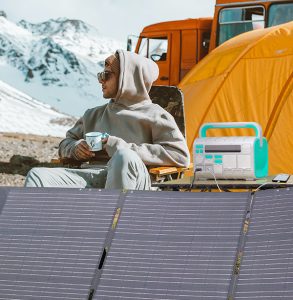Harnessing solar energy is a remarkable advancement that not only helps protect the environment but also allows you to save on electricity bills. It makes perfect sense to store some of the energy generated for future use, especially during emergencies like power outages. In this article, we’ll explore how household batteries work and various methods to store solar energy effectively.
Understanding Home Batteries
Home batteries are designed to store electrical energy for later use, providing a reliable power backup during outages or grid failures. These batteries integrate with your home’s electrical grid, storing electricity from external sources or your own solar panels. While home batteries have been around for decades, modern advancements in solar technology and compact electronics have made them more practical for everyday use.
Most home batteries use lithium-ion cells, similar to those found in electric vehicles like Tesla cars. This technology allows for substantial energy storage, making these batteries highly effective during emergencies or off-grid situations.
How Home Batteries Integrate with Your Home
When you install a home battery, your home’s electrical grid undergoes slight modifications:
– Grid Connection: If your home is connected to the wider electrical grid, the grid’s electrical line connects to a distribution panel that supplies power to high-load devices like washing machines and HVAC systems. The remaining current flows through the home battery, which acts as a buffer.
– Solar Panel Integration: If you have a solar panel system, it can also connect directly to the home battery. The battery can then be configured to:
– Store power for use during outages.
– Disconnect from the grid during certain hours to supply power to specific devices.
– Act as a reserve power source when your solar panels aren’t generating electricity, such as at night.
An electrician will typically install a critical loads panel to manage how the battery powers various devices during specific situations.
Ten Ways to Store Solar Energy
1. Solar Generator
Solar generators are portable and often come with pre-installed batteries to store excess energy. High-end models can store electricity for up to a year, making them ideal for emergency backup power. Choose a generator with multiple outputs to power essential appliances.

2. Thermal Storage
Thermal storage involves storing solar energy as heat. Materials like molten sand or water are heated by the sun and stored in insulated tanks. This heat can later be used to generate electricity by boiling water to produce steam, which drives a turbine.

3. Flywheel
A flywheel stores energy by maintaining rotational inertia. When attached to an electrical generator, the flywheel’s energy is converted into electrical power. Flywheels provide quick power but have limited storage capacity.
4. Pumped Hydro
Pumped-storage hydropower uses electrical energy to pump water uphill. The water is then released to flow downhill, turning a turbine to generate electricity. This method requires a significant water source.

5. Compressed Air
Compressed air storage involves pumping air into large, pressurized tanks. When needed, the air is released to drive a turbine. Some systems integrate the released air into a natural gas power cycle, storing the air in sealed underground caverns.
6. LiFePO4 Batteries
LiFePO4 batteries are commonly used for home solar energy storage. They offer high storage capacity and quick recharge times. For example, the Tursan 2400w Portable Power Station provides 2,621Wh of power and can charge ten devices simultaneously.

7. Saltwater Batteries
Saltwater batteries use a liquid sodium solution to store energy. While they have a lower energy density than lithium-ion batteries, they are fire-resistant and non-hazardous, making them reliable for solar-powered homes.
8. Lead-Acid Batteries
Lead-acid batteries are the oldest type of rechargeable battery and are still used for backup power in smaller systems. They are less efficient than modern alternatives but are affordable and suitable for small off-grid systems.
9. Solar Fuels
Solar energy can be used to create alternative fuels like oxygen and methane. These fuels store energy in chemical bonds, offering long-term storage and transportability.
10. Use Your Accumulated Energy
Without specialized storage devices, you can maximize solar energy by using it immediately. Keep devices charged, preheat or cool your home before weather changes, and manage energy consumption efficiently.
Solar energy is the most abundant resource on Earth, yet much of it remains untapped. By investing in storage solutions, you can make better use of solar energy, reduce your carbon footprint, and ensure a reliable power supply. Tursan is dedicated to meeting your solar energy needs with innovative products designed for both home and outdoor use.
Investing in a home battery system can prevent future power problems for you and your family. Tursan offers a range of portable, solar, and grid-rechargeable power stations to meet various needs. Explore our solar generators and portable power stations online, and contact us to learn more about our products.





